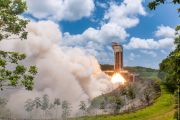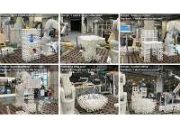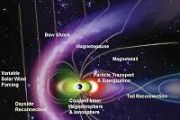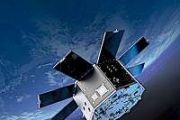
Copernical Team
NASA rolls Artemis I mission rocket back to launch pad ahead of Nov. 14 launch
 NASA is making another run at launching the Artemis I spacecraft on its maiden voyage to the moon, rolling the $4.1 billion rocket back onto the launch pad Thursday at Kennedy Space Center after months of delays pushed the liftoff to Nov. 14.
The launch is scheduled a week from Monday at 12:07 a.m., but NASA was keeping an eye on a low-pressure system in the Caribbean that threatened to
NASA is making another run at launching the Artemis I spacecraft on its maiden voyage to the moon, rolling the $4.1 billion rocket back onto the launch pad Thursday at Kennedy Space Center after months of delays pushed the liftoff to Nov. 14.
The launch is scheduled a week from Monday at 12:07 a.m., but NASA was keeping an eye on a low-pressure system in the Caribbean that threatened to Iran says it successfully tested satellite launcher
 Iran announced Saturday the successful test flight of a rocket capable of propelling satellites into space, three months after launching a satellite with the help of Russia.
The United States has repeatedly voiced concern that such launches could boost Iran's ballistic missile technology, extending to the potential delivery of nuclear warheads.
But Iran insists it is not seeking nuclear
Iran announced Saturday the successful test flight of a rocket capable of propelling satellites into space, three months after launching a satellite with the help of Russia.
The United States has repeatedly voiced concern that such launches could boost Iran's ballistic missile technology, extending to the potential delivery of nuclear warheads.
But Iran insists it is not seeking nuclear Video: Testing Galileo for space
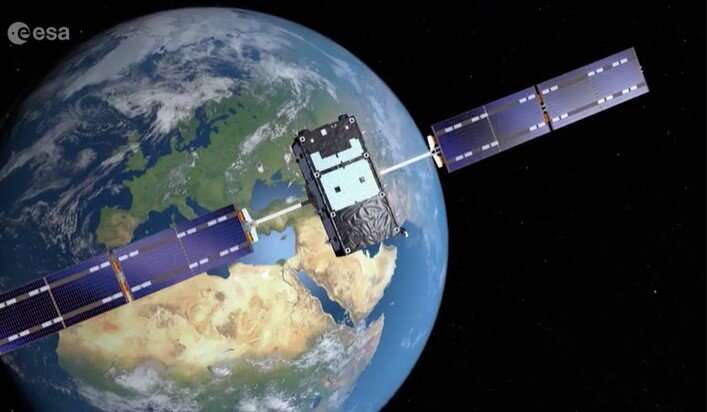
Galileo has grown to become Europe's single largest satellite constellation, and the world's most accurate satellite navigation system, delivering meter-level positioning to more than 3.5 billion users around the globe.
It all began at ESTEC's Test Center, Europe's largest satellite testing facility. This is where the very first positioning fix took place in March 2013, after the launch into orbit of the initial four IOV satellites. Following that, all 34 Galileo Full Operational Capability satellites also passed by ESTEC for their pre-flight testing.
This 3000 sq. m environmentally-controlled complex, operated and managed by European Test Services for ESA, hosts an array of test equipment able to simulate all aspects of spaceflight, from the noise and vibration of launch to the vacuum and temperature extremes of Earth orbit.
The production line at manufacturer OHB in Germany completed one new satellite every six weeks. After integration each satellite was then shipped to the ESTEC Test Center for a three-month test campaign, after which it would be accepted by the Agency and declared ready for flight. Some facilities have had to be adapted specifically for Galileo, and the ESTEC Test Center had to institute new security protocols because this was the first time that satellites with security restrictions were being tested at the site.
NASA's moon rocket returns to pad for next launch attempt
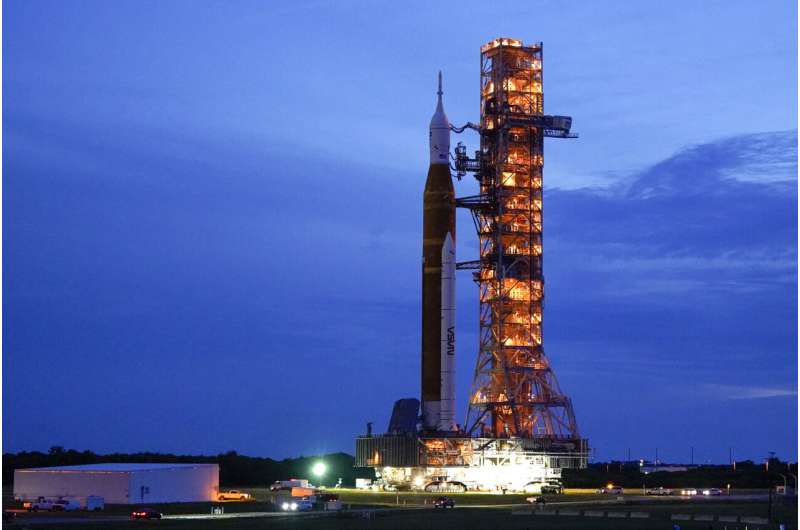
NASA's moon rocket is back on the pad for another launch attempt, following more repairs.
The 322-foot (98-meter) rocket departed its hangar in the middle of the night and completed the 4-mile (6.4-kilometer) trip shortly after sunrise Friday.
How do you keep a solar sail stable?
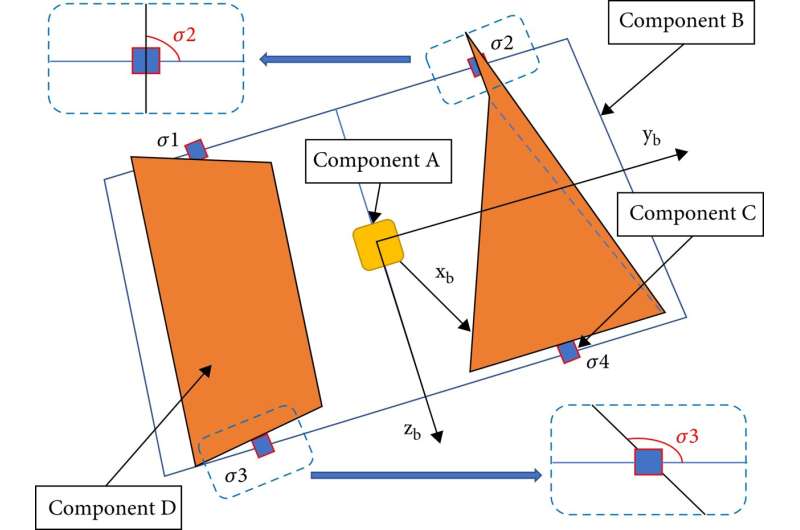
Solar sailing seems like a simple concept—instead of being pushed along by the wind, as in a typical sailing ship, a spacecraft can use highly reflective said to be pushed along simply by sunlight. But as with almost all engineering challenges, that technique is much easier said than done. Sunlight can head up one side of a sail more than another, causing the ship to rotate unexpectedly. Other unforeseen situations could arise that can also have catastrophic consequences for any mission using this propulsion technology.
Luckily, there is a way to account for those situations, though it involves a lot of math. Control theory is common in system design, and now researchers at Beihang University have devised a control scheme that they think could help minimize the risk to solar sails.
Control systems are relatively easy to understand in concept. A system has a series of inputs; in the case of a solar sail, those inputs might be the solar force pushing on it from the sun and maybe the gravity of any nearby object.
Week in images: 31 October - 4 November 2022

Week in images: 31 October - 4 November 2022
Discover our week through the lens
Bye-Bye Biomass: forest monitoring satellite departs for final testing before launch
 Biomass, the European Space Agency's (ESA) forest measuring satellite has left the Airbus Defence and Space site in Stevenage and is on its way to Toulouse for final testing ahead of launch.
The comprehensive environmental test programme for the spacecraft will include thermal vacuum tests, mechanical vibration, acoustic and electromagnetic compatibility testing to replicate the conditions
Biomass, the European Space Agency's (ESA) forest measuring satellite has left the Airbus Defence and Space site in Stevenage and is on its way to Toulouse for final testing ahead of launch.
The comprehensive environmental test programme for the spacecraft will include thermal vacuum tests, mechanical vibration, acoustic and electromagnetic compatibility testing to replicate the conditions Terran Orbital receives $100M investment from Lockheed Martin
 Terran Orbital Corporation (NYSE: LLAP), a global leader in satellite-based solutions primarily serving the United States and Allied aerospace and defense industries, announced that it has entered into a note and warrant purchase agreement pursuant to which Terran Orbital received a $100 million investment from Lockheed Martin (NYSE: LMT) in exchange for convertible notes and warrants issued by
Terran Orbital Corporation (NYSE: LLAP), a global leader in satellite-based solutions primarily serving the United States and Allied aerospace and defense industries, announced that it has entered into a note and warrant purchase agreement pursuant to which Terran Orbital received a $100 million investment from Lockheed Martin (NYSE: LMT) in exchange for convertible notes and warrants issued by Saltzman formally elevated to Space Force's highest position - Chief of Space Operations
 Pledging to build on the Space Force's achievements while also infusing the nascent service with new approaches, Gen. B. Chance Saltzman was officially installed Nov. 2 as Chief of Space Operations, the service's highest-ranking military post and only the second person to hold the position in the Space Force's history.
In remarks during a solemn "Change of Responsibility" ceremony in which
Pledging to build on the Space Force's achievements while also infusing the nascent service with new approaches, Gen. B. Chance Saltzman was officially installed Nov. 2 as Chief of Space Operations, the service's highest-ranking military post and only the second person to hold the position in the Space Force's history.
In remarks during a solemn "Change of Responsibility" ceremony in which Mars's crust more complex, evolved than previously thought
 Early crust on Mars may be more complex than previously thought-and it may even be similar to our own planet's original crust.
The Martian surface is uniformly basaltic, a product of billions of years of volcanism and flowing lava on the surface that eventually cooled. Because Mars did not undergo full-scale surface remodeling like the shifting of continents on Earth, scientists had though
Early crust on Mars may be more complex than previously thought-and it may even be similar to our own planet's original crust.
The Martian surface is uniformly basaltic, a product of billions of years of volcanism and flowing lava on the surface that eventually cooled. Because Mars did not undergo full-scale surface remodeling like the shifting of continents on Earth, scientists had though 














